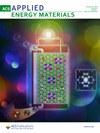冷暗物质生成:从PTA信号看暗物质和重子不对称性
IF 5.4
3区 材料科学
Q2 CHEMISTRY, PHYSICAL
引用次数: 0
摘要
脉冲星定时阵列(PTA)实验最近报告的纳赫兹引力波信号是由一个近乎共形的暗扇区的强一阶相变产生的,我们基于这种引人入胜的可能性。相变必须是强过冷才能解释信号振幅,而临界温度必须在 O(GeV)范围内,这是由引力波频谱的峰值频率决定的。然而,由此产生的强过冷会以指数方式稀释掉任何先前存在的重子不对称和暗物质,这就需要一种新的暗物质产生范式。随后,我们提出了一种冷暗物质生成机制,它能在纹理暗 SU(2)D 希格斯场的相变过程中产生暗不对称。这种暗不对称通过中子门相互作用转移到可见扇区,从而产生观测到的重子不对称。此外,该机制自然会导致不对称暗物质的正确丰度,其自相互作用的尺度与解决银河旋转曲线多样性问题的尺度一致。对撞机单射流搜索和暗物质直接探测实验可以决定该模型的可行性。本文章由计算机程序翻译,如有差异,请以英文原文为准。
Cold darkogenesis: Dark matter and baryon asymmetry in light of the PTA signal
We build upon the intriguing possibility that the recently reported nano-Hz gravitational wave signal by Pulsar Timing Array (PTA) experiments is sourced by a strong first-order phase transition from a nearly conformal dark sector. The phase transition has to be strongly supercooled to explain the signal amplitude, while the critical temperature has to be in the (GeV) range, as dictated by the peak frequency of the gravitational wave spectrum. However, the resulting strong supercooling exponentially dilutes away any pre-existing baryon asymmetry and dark matter, calling for a new paradigm of their productions. We then develop a mechanism of cold darkogenesis that generates a dark asymmetry during the phase transition from the textured dark Higgs field. This dark asymmetry is transferred to the visible sector via neutron portal interactions, resulting in the observed baryon asymmetry. Furthermore, the mechanism naturally leads to the correct abundance of asymmetric dark matter, with self-interaction of the scale that is of the right order to solve the diversity problem in galactic rotation curves. Collider searches for mono-jets and dark matter direct detection experiments can dictate the viability of the model.
求助全文
通过发布文献求助,成功后即可免费获取论文全文。
去求助
来源期刊

ACS Applied Energy Materials
Materials Science-Materials Chemistry
CiteScore
10.30
自引率
6.20%
发文量
1368
期刊介绍:
ACS Applied Energy Materials is an interdisciplinary journal publishing original research covering all aspects of materials, engineering, chemistry, physics and biology relevant to energy conversion and storage. The journal is devoted to reports of new and original experimental and theoretical research of an applied nature that integrate knowledge in the areas of materials, engineering, physics, bioscience, and chemistry into important energy applications.
 求助内容:
求助内容: 应助结果提醒方式:
应助结果提醒方式:


